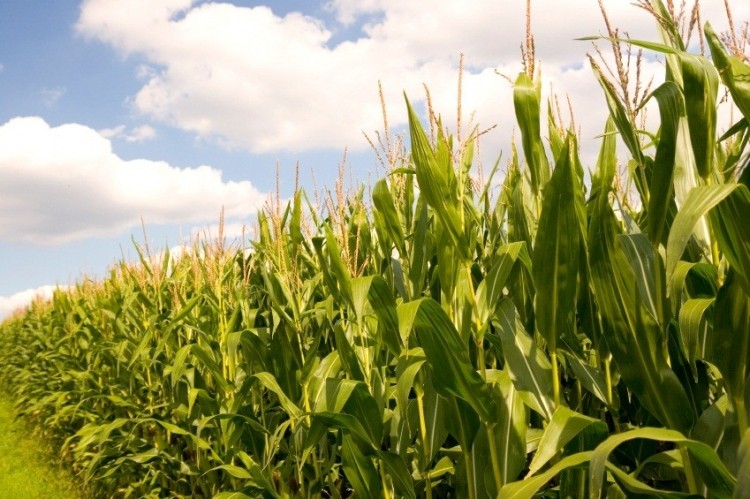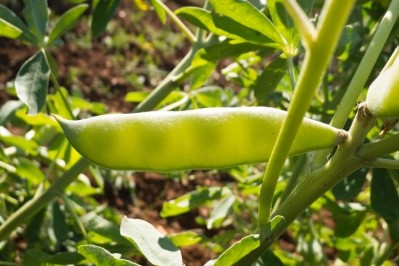US organic report shows increase in overall sales, downturn for feed crops

The US Department of Agriculture (USDA) released a report covering acreage, production and sales information for several organic products, including feed crops and livestock production.
The total value of organic agricultural products sold grew from $5.5bn in 2014 to $6.2bn in 2015, said the USDA. Organic crops increased sales from $3.3bn to $3.5bn and the value for organically produced livestock, poultry and products grew from $2.2bn to $2.7bn.
However, the ease of access to organic animal feed often depends on where a producer in is located, said Harriet Behar, senior organic specialist with the Midwest Organic and Sustainable Education Service (MOSES). Some feed mills are certified for organic production, but it can be a challenge to buy a pre-made feed.
“We are short on organic corn, and soybean and grains for livestock feed,” she told FeedNavigator. “That shortage is encouraging cheaper imports to come in, and we’re not really happy about that.”
Although imported organic feed may lower prices, it also can raise questions regarding tracking and documentation, she said. “We don’t want them to undercut the price – but more of the concern beside it’s just being cheaper, is whether they are they following our rules?” she added.
It is hard to say how much more feed production is needed to meet demands, said Behar. But organic livestock production keeps increasing, along with the demand for livestock products like milk and eggs, she added.
Report details
The states that accounted for the largest portion of organic sales included California, Washington, Pennsylvania, Oregon and Wisconsin with rales ranging from $2.4bn, to $222m, respectively, said the USDA. Sales grew for all five states from 2014 to 2015.
Of the 3.5bn in crop sales for 2015, about $355, was for potential feed crops with $129m from sales for feed corn, $117m for hay sales and $109m in wheat sales, said the department.
However, the amount of total sales generated by organic feed and field crops fell from $717m in 2014 to $660m 2015, the department said. That included a decline in sales generated for corn, hay, and soybeans – sales for wheat in 2014 were not reported.
About 6,403 farms were involved in the production of field crops, and harvested about 1,458,706 acres, the department said. States with the largest amount of feed and field crop acres included California, Idaho, Minnesota, Montana, New York and Wisconsin.
Across the US, 2,720 farms harvested about 166,841 acres of feed corn in 2015, the USDA said. States with the most acres in production included Iowa, Minnesota and Wisconsin.
About 947 farms also harvested 35,149 acres of corn for silage and greenchop that year, the department said.
Farms also raised about 430,331 acres of organic hay, and 248,569 acres of alfalfa or alfalfa blends, said the department. About 161,000 acres also were harvested for haylage and greenchop, while 54,426 produced alfalfa or alfalfa blend haylage and greenchop.
Forty farms also raised 10,578 acres of sorghum for feed or seed, while 117 produced the feed crop for silage and greenchop, the department said.
Nationally about 1,420 farms also harvested 94,841 acres of organic soybeans, the department said. States with the largest production included Iowa and Minnesota.
Additionally, about $520,671 in revenue was lost for 32 farms from cross contamination with genetically engineered crops, the department said. It was a slight upturn from the 31 farms that saw $506,552 in losses in 2014.
Sales for animals produced using approved organic methods and feed grew overall, and for specific products, said the USDA. Sales for broilers, cattle and turkeys increased from $660m 2014 to $743m in 2015.
Organic milk sales also rose from $1.08bn to $1.17bn and egg sales grew from $420m to $732m, the department said.
Land use
Additionally, the total number of farms certified as organic also grew from 2014 to 2015, said the USDA. The number moved from 12,634 to 12,818.
Farms transitioning acres to organic production increased from 1,272 in 2014 to 1,530, said the department.
Overall organic acreage grew 20% from 3.6m to 4.4m acres, the department said. States with the largest number of certified acres include California, Alaska, Montana, New York, Wisconsin, Oregon, Idaho, Colorado, Vermont and Wyoming and ranged from 790,000 to 129,000 acres, respectively.
Acres in transition increased from 119,458 to 150,880, the department said.










